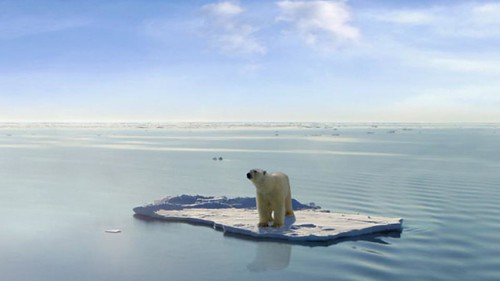As soon as 2050, ships will be able to sail directly across what is known as the “northern route,” cutting through what used to be solid ice as late-summer Arctic sea ice disappears. Russian icebreakers and other fortified ships have already been taking the shortcut: a total of 46 ships took the northern route in 2012, mostly escorted by icebreakers. But in less than 40 years, according to a study published this week, regular ships will be able to make the trip easily, and slightly fortified ships will be able to take a super-fast route directly across. The shortcut will enormously cut the costs of trade between Europe and China, which will open the floodgates for even more potentially devastating economic activity.
"The emergence of a … corridor directly over the north pole indicates that sea ice will become sufficiently thin such that a critical technical threshold is surpassed, and the shortest great circle route thus becomes feasible, for ships with moderate ice-breaking capability," says the paper.
"The prospect of common open water ships, which comprise the vast majority of the global fleet, entering the Arctic Ocean in late summer, and even its remote central basin by moderately ice-strengthened vessels heightens the urgency for a mandatory International Maritime Organisation regulatory framework to ensure adequate environmental protections, vessel safety standards, and search-and-rescue capability," it adds.
Naturally, the projected shipping routes have already been determined, as well as the fuel and time savings.
As the United Nations' Environment Program discussed earlier this year, the Arctic needs to be protected now as melting ice makes exploration easier, and human activity threatens wildlife and ecosystems.
"What we are seeing is that the melting of ice is prompting a rush for exactly the fossil fuel resources that fuelled the melt in the first place," said Achim Steiner, U.N. Under-Secretary-General and UNEP Executive Director.
"As the UNEP Year Book 2013 points out, the rush to exploit these vast untapped reserves have consequences that must be carefully thought through by countries everywhere, given the global impacts and issues at stake."
Last September, Arctic sea ice reached its lowest level in the satellite record, which dates back to 1979, and scientists say there could be an ice-free summer by 2030-2040.
The melt is largely blamed on rising greenhouse gas emissions, short-lived pollutants such as soot, or black carbon, and variations in atmosphere and ocean currents.
The U.N. body advised that no steps to exploit the Arctic environment be taken until an assessment to determine how activities would affect the ecosystems and populations in the region.















